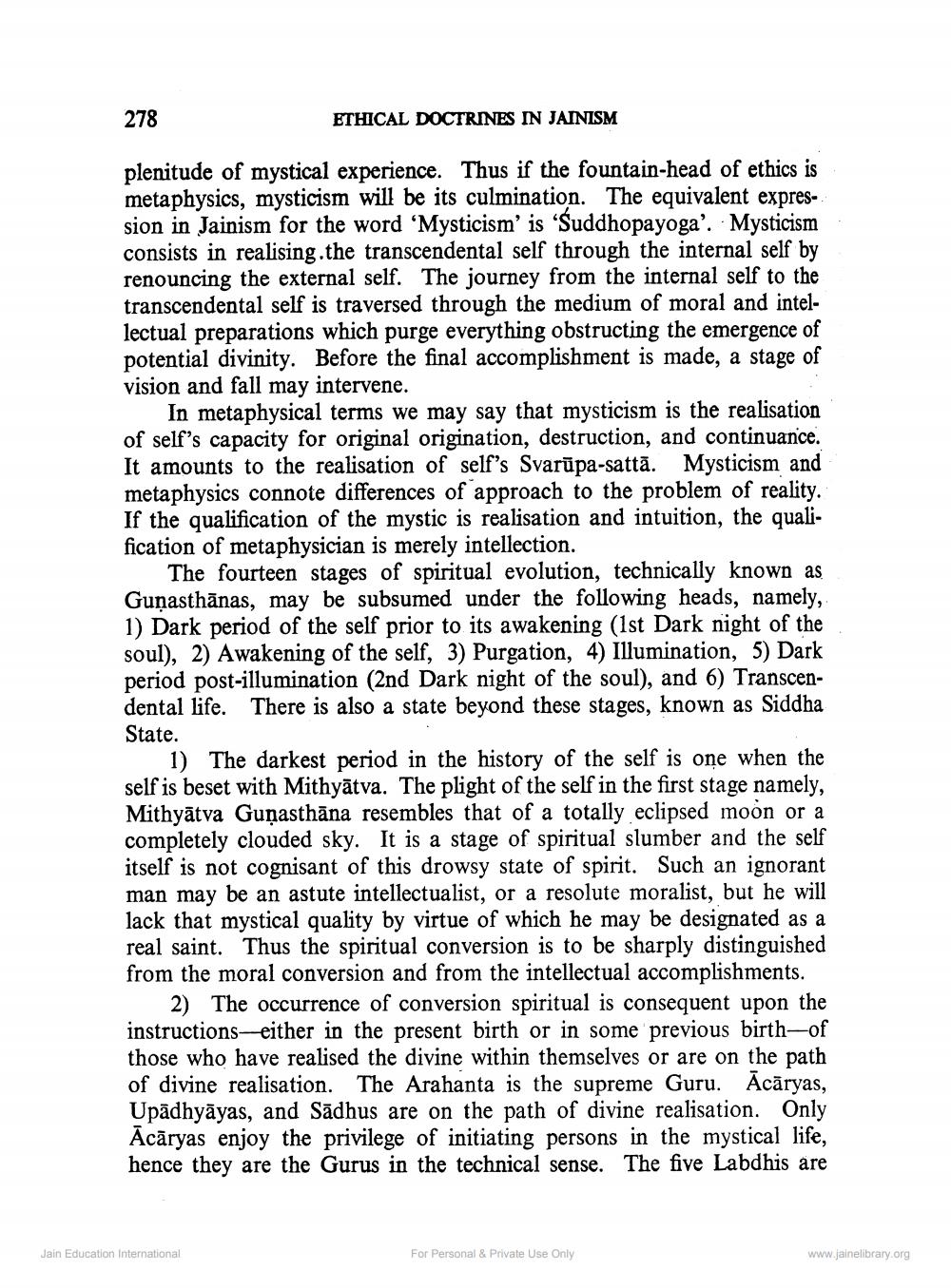________________
278
ETHICAL DOCTRINES IN JAINISM
plenitude of mystical experience. Thus if the fountain-head of ethics is metaphysics, mysticism will be its culmination. The equivalent expression in Jainism for the word 'Mysticism' is 'Suddhopayoga'. Mysticism consists in realising the transcendental self through the internal self by renouncing the external self. The journey from the internal self to the transcendental self is traversed through the medium of moral and intellectual preparations which purge everything obstructing the emergence of potential divinity. Before the final accomplishment is made, a stage of vision and fall may intervene.
In metaphysical terms we may say that mysticism is the realisation of self's capacity for original origination, destruction, and continuance. It amounts to the realisation of self's Svarūpa-sattā. Mysticism and metaphysics connote differences of approach to the problem of reality. If the qualification of the mystic is realisation and intuition, the qualification of metaphysician is merely intellection.
The fourteen stages of spiritual evolution, technically known as Gunasthānas, may be subsumed under the following heads, namely, 1) Dark period of the self prior to its awakening (1st Dark night of the soul), 2) Awakening of the self, 3) Purgation, 4) Illumination, 5) Dark period post-illumination (2nd Dark night of the soul), and 6) Transcendental life. There is also a state beyond these stages, known as Siddha State.
1) The darkest period in the history of the self is one when the self is beset with Mithyātva. The plight of the self in the first stage namely, Mithyātva Guņasthāna resembles that of a totally eclipsed moon or a completely clouded sky. It is a stage of spiritual slumber and the self itself is not cognisant of this drowsy state of spirit. Such an ignorant man may be an astute intellectualist, or a resolute moralist, but he will lack that mystical quality by virtue of which he may be designated as a real saint. Thus the spiritual conversion is to be sharply distinguished from the moral conversion and from the intellectual accomplishments.
2) The occurrence of conversion spiritual is consequent upon the instructions-either in the present birth or in some previous birth-of those who have realised the divine within themselves or are on the path of divine realisation. The Arahanta is the supreme Guru. Ācāryas, Upadhyāyas, and Sadhus are on the path of divine realisation. Only Ācāryas enjoy the privilege of initiating persons in the mystical life, hence they are the Gurus in the technical sense. The five Labdhis are
Jain Education International
For Personal & Private Use Only
www.jainelibrary.org




